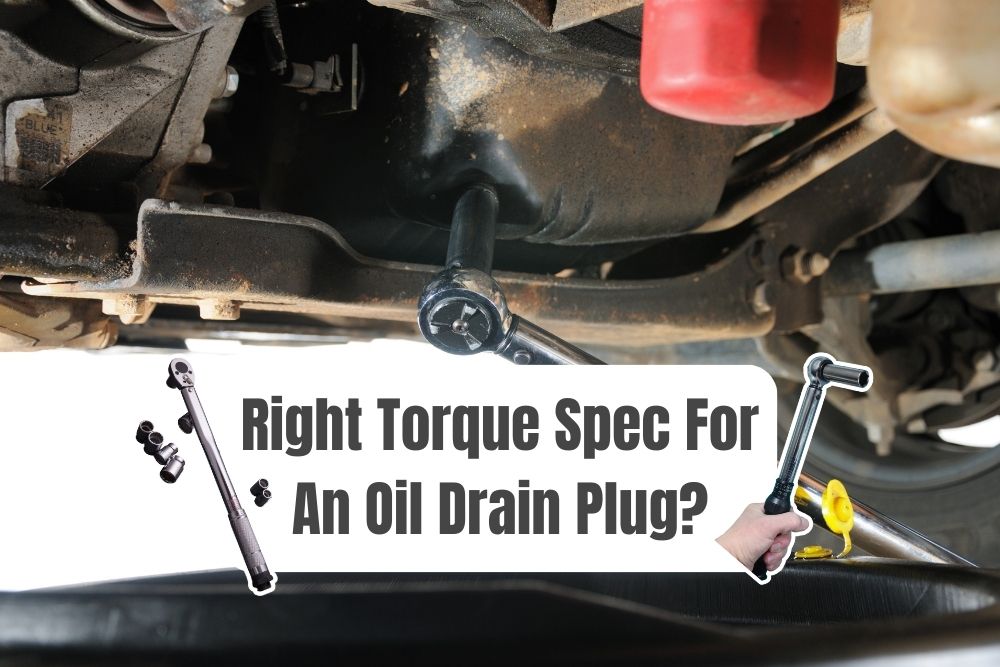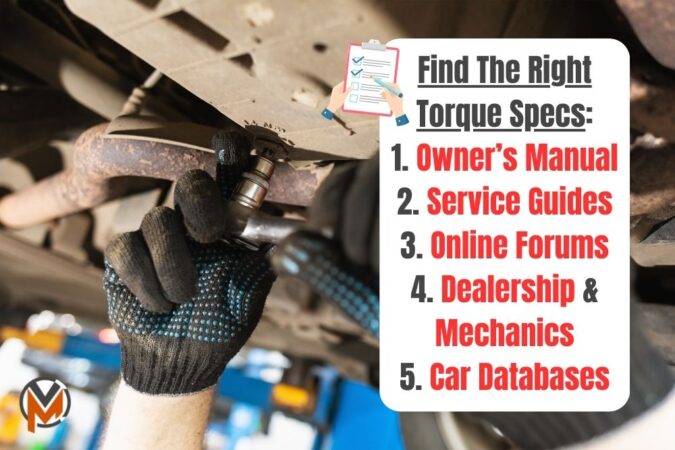When performing an oil change, one of the things that most people seem to forget is properly tightening the oil drain plug or bolt. So then, what is the right and ideal torque spec for your car’s oil drain plug?
Unfortunately, there’s no one-size-fits-all answer when it comes to torque specs for your oil drain plug or bolt. In practice, the precise torque specs can vary significantly from one car to another, so it’ll differ.
On average, most regular passenger cars have a torque spec for their oil drain plugs/bolts of about 20 ft-lbs (27 Nm), or thereabouts. But then again, for your specific car, this figure might be higher or lower.
Thankfully, it’s pretty easy to find out what the right torque spec for your car’s oil drain plug is. Typically, you can find the torque specs in your car’s owner’s or service manual, which should list the right figure.
- What is the right torque spec?
- How to find the correct torque specs?
- Do you need to use a torque wrench?
- How to remove an over-tightened oil plug?
Oil Drain Plug Torque
As I’ve mentioned earlier, the torque specs for your car’s oil drain plug are not universal; as it varies widely among different car makes and models. As such, that average of 20 ft-lbs (27 Nm) doesn’t always apply.
To give you a clearer picture and to have a rough idea of what your particular car’s oil drain plug torque specs might be, here are some examples of torque specs for a selection of popular cars on the market:
- Ford Fiesta ST – Approximately 10.7 ft-lbs (14.5 Nm)
- Chevrolet Silverado 1500 (V8 engine) – Around 18 ft-lbs (24.4 Nm)
- Honda Civic – Typically 29 ft-lbs (39.3 Nm)
- Toyota Camry – Usually set at 30 ft-lbs (40.7 Nm)
- BMW 3 Series – Often around 18 ft-lbs (24.4 Nm)
As you can see, these examples illustrate the immense diversity in torque specs for a car’s oil drain plug or bolt, emphasizing the need to consult your vehicle’s specific manual or a reliable service guide.
How Tight Should Oil Drain Plug Be
To find the right oil drain plug or bolt torque spec for your specific car, there are some handy and reliable ways that you can figure it out:
- Consult the Owner’s Manual – This is your most reliable source. Your car’s owner’s manual would typically include a section on maintenance, where you can find the exact torque spec for your oil drain plug.
- Check Service Guides – If your owner’s manual is not available, look for a service guide or a repair manual specific to your car’s make, model, model year, and even the trim level. These service guides and manuals are often incredibly detailed and provide a range of maintenance specs, including torque settings.
- Online Forums and Resources – Automotive forums and brand-specific online communities can offer some insights from other car owners. While these sources might not be as definitive as an owner’s manual or a service guide, they can provide useful anecdotal evidence, especially for more common models.
- Dealerships and Mechanics – If you’re still unsure, a quick call to a local dealership or a trusted mechanic can provide the correct information. They usually have access to a database of specs for various models, including the torque specs for your oil drain plug or bolt.
- Automotive Apps and Online Tools – There are several apps and online tools available that could provide vehicle-specific information, including torque specs. These databases, apps, and tools can be particularly useful if you’re on the go or don’t have immediate access to physical manuals or guides.
Oil Drain Plug Torque Wrench
When it comes to tightening your oil drain plug, using a torque wrench is not just a recommendation; it’s a necessity for precision. A torque wrench ensures that you can apply the exact amount of force required.
This helps with avoiding the risks associated with over-tightening (such as stripped threads and a warped oil pan), or otherwise under-tightening the oil drain plug (which can lead to issues like oil leaks).
In fact, here’s why torque specs matter when tightening your oil drain plug:
- Preventing Leaks – An improperly tightened oil drain plug can lead to oil leaks. This might damage your engine (due to a lack of lubrication) or create a mess in your driveway.
- Avoiding Damage – Over-tightening can damage the threads on the oil drain plug or the oil pan, leading to costly repairs or replacements down the line.
- Ensuring Safety – Correct torque ensures that your oil drain plug stays securely in place, which is vital for the safe operation of your vehicle.
How To Remove An Over Tightened Oil Plug
At times, you may encounter an oil drain plug that has been over-tightened. This can make it very challenging to remove during your next oil change. This is what happens if you don’t pay attention to the torque specs.
This situation can occur due to overzealous tightening, or the plug becoming seized over time. Here’s how to tackle this issue safely and effectively, in order to remove an over-tightened oil drain plug or bolt.
First off, you’ll need some tools to help expedite the process:
- A quality socket wrench set
- A breaker bar for additional leverage
- Penetrating oil (like WD-40 or PB Blaster)
- A rubber mallet or hammer
- A pair of vice grips (if necessary)
Step-By-Step Oil Drain Plug Removal Guide
Now, with those tools in hand, here’s a quick guide on how you can remove a stuck or stubborn oil drain plug:
- Apply Penetrating Oil – Liberally spray penetrating oil around the oil plug and let it sit for at least 15-30 minutes. This helps to loosen the grip by breaking down rust and corrosion.
- Use the Correct Socket – Ensure that you’re using the correct-sized socket for your oil drain plug. A socket that fits snugly will reduce the risk of rounding off the oil drain plug.
- Gentle Tapping – Sometimes, gently tapping the head of the oil drain plug with a rubber mallet can help break the seal.
- Apply Leverage – Attach your socket wrench to the oil drain plug and use a breaker bar for additional leverage. Apply steady and controlled force; avoid jerking or sudden movements.
- If The Plug Is Rounded Off – In case the oil drain plug head gets rounded off, use a pair of vice grips to clamp onto the plug tightly and turn slowly.
- Heat Application (If Necessary) – As a last resort, applying heat around the oil drain plug area can expand the metal. This can help in loosening the plug. This should be done cautiously to avoid damaging surrounding components.



